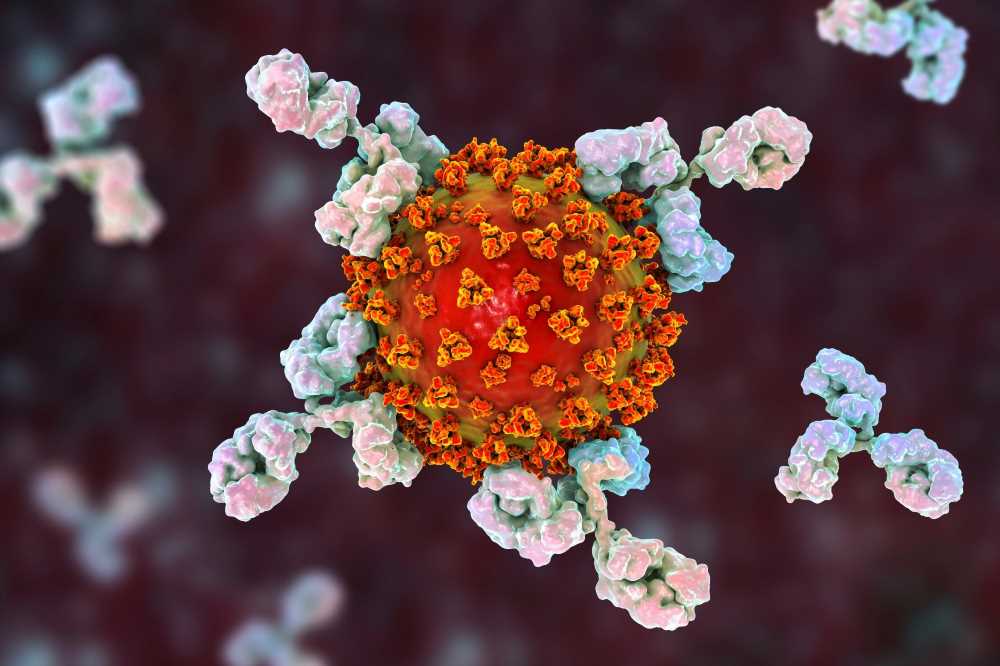In a recent study published in Transplantation Proceedings, researchers explored the trajectory of antibody (Ab) titers after coronavirus disease 2019 (COVID-19) vaccination among solid organ transplant recipients (SOTs) with or without mycophenolate mofetil (MMF), or withdrawn from MMF.

COVID-19 vaccines have been reported to be effective and safe in clinical trials and real-world settings for the general public. However, the blunted Ab responses in SOTs against severe acute respiratory syndrome coronavirus 2 (SARS-CoV-2) have been concerning. Data on SOTs on potent immunosuppressant medications such as MMF to prevent organ transplant rejection are lacking since they have been largely excluded from COVID-19 vaccine clinical trials.
About the study
In the present single-center, prospective observational study, researchers investigated the immunogenicity of SARS-CoV-2 vaccines among SOTs and the impact of MMF on immunogenicity.
The study comprised 78 SOTs on immunosuppressive medications who received two doses of Pfizer-BioNTech’s BNT162b2 messenger ribonucleic acid (mRNA) COVID-19 vaccine and was conducted between 1 July 2021 and 30 April 2022. The team excluded individuals with prior PCR (polymerase chain reaction)-confirmed COVID-19 history or anti-SARS-CoV-2 nucleocapsid (N) protein Abs prior to the second COVID-19 vaccination.
The study participants were divided into SOTs groups: MMF users, non-MMF users and MMF-withdrawal individuals. The first two doses were given ≥21 days apart, and serum samples for Ab measurements were obtained ≥14 days after the second COVID-19 vaccination over three outpatient visits.
Serum SARS-CoV-2 spike (S) protein receptor-binding domain (RBD) immunoglobulin (Ig)G Ab titers were quantified using chemiluminescent enzyme immunoassays. Ab titers >1.0 arbitrary units (AU)/mL denoted seropositivity. Serum samples were also used for therapeutic drug monitoring of MMF.
The team explored the association between MMF concentration immediately prior to the second vaccination and anti-S RBD IgG titers at the first outpatient visit after the second COVID-19 vaccination. They also comprehensively analyzed B lymphocyte and the cluster of differentiation (CD)4+ helper and CD8+ cytotoxic T lymphocyte counts before and after MMF withdrawal.
Ab titer trajectories were evaluated using density plots, and linear mixed-effects modeling was used for evaluating visit-to-visit variations in anti-S RBD IgG titers. Non-linear restricted regression modeling explored the association between anti-S RBD IgG titers and days elapsed from the second COVID-19 vaccination.
Results
The median age of the study participants was 67 years, and most of them (76%) were males. Median days of V1, V2, and V3 after the second COVID-19 vaccination were 46 days, 107 days, and 188 days, respectively. MMF withdrawal was successful in all but one participant, who showed elevated LFT (liver function test) values during withdrawal. No graft failure was observed among the study participants.
Low seroconversion rates (29 out of 42, 69%) and low Ab titers were observed among MMF-treated SOTs. An inverse linear relationship between neutralizing Ab (nAb) titers and MMF concentration was observed. MMF administration significantly modified Ab response trajectories, and post MMF withdrawal, significantly elevated B-lymphocyte counts with improved Ab titers were observed. However, no significant differences were observed in CD4+, and CD8+ T-lymphocyte counts prior to and post-MMF withdrawal.
Of 78 participants, 82% (n=64) were seropositive at Visit 1 (V1), of which 79% (n=15) were continuous MMF users, and 61% (n=14) were MMF-withdrawal individuals. Of interest, five MMF-withdrawal group individuals were seronegative at V1 but seroconverted by V2 after MMF withdrawal without additional COVID-19 vaccinations. Higher anti-S RBD titers were observed among SOTs without MMF than other participants at V1; however, the Ab titer distribution shifted towards zero at V2 and V3.
Conclusions
Overall, the study findings showed markedly attenuated Ab titers among SOTs with MMF in a dose-dependent manner after the second SARS-CoV-2 vaccine dose. The findings are critical to elucidate optimal countermeasures for SOTs. Diminished Ab responses were observed at V3 among all three SOTs groups, underpinning the booster (third dose) administration for SOTs.
Cautiously performed MMF withdrawal could potentially enhance Ab titers among SOTs. SOTs that attain only low Ab titers should continue NPI (non-pharmaceutical interventions), such as social distancing and mask-wearing.
Study limitations
The single-center study design and the inclusion of individuals with relatively long periods since transplantation were limitations of the present study. In addition, booster-vaccinated individuals were not included to assess the durability of Ab responses and adverse effects such as organ rejection and allograft complications. Moreover, SARS-CoV-2-specific CD4+ and CD8+ T-lymphocyte responses and their cytokine expression were not evaluated.
- Akiyoshi Sakai, et al. (2022). Trajectory of COVID-19 Vaccine Antibody Titers Over Time and Association of Mycophenolate Mofetil in Solid Organ Transplant Recipients, Transplantation Proceedings. doi: https://doi.org/10.1016/j.transproceed.2022.10.02 https://www.sciencedirect.com/science/article/pii/S0041134522006935
Posted in: Medical Science News | Medical Condition News
Tags: Antibody, B Lymphocyte, CD4, Coronavirus, covid-19, Cytokine, Enzyme, Immunoassays, Immunoglobulin, Liver, Lymphocyte, Polymerase, Polymerase Chain Reaction, Protein, Receptor, Respiratory, Ribonucleic Acid, SARS, SARS-CoV-2, Severe Acute Respiratory, Severe Acute Respiratory Syndrome, Syndrome, T Lymphocyte, Therapeutic Drug Monitoring, Transplant, Vaccine

Written by
Pooja Toshniwal Paharia
Dr. based clinical-radiological diagnosis and management of oral lesions and conditions and associated maxillofacial disorders.
Source: Read Full Article
